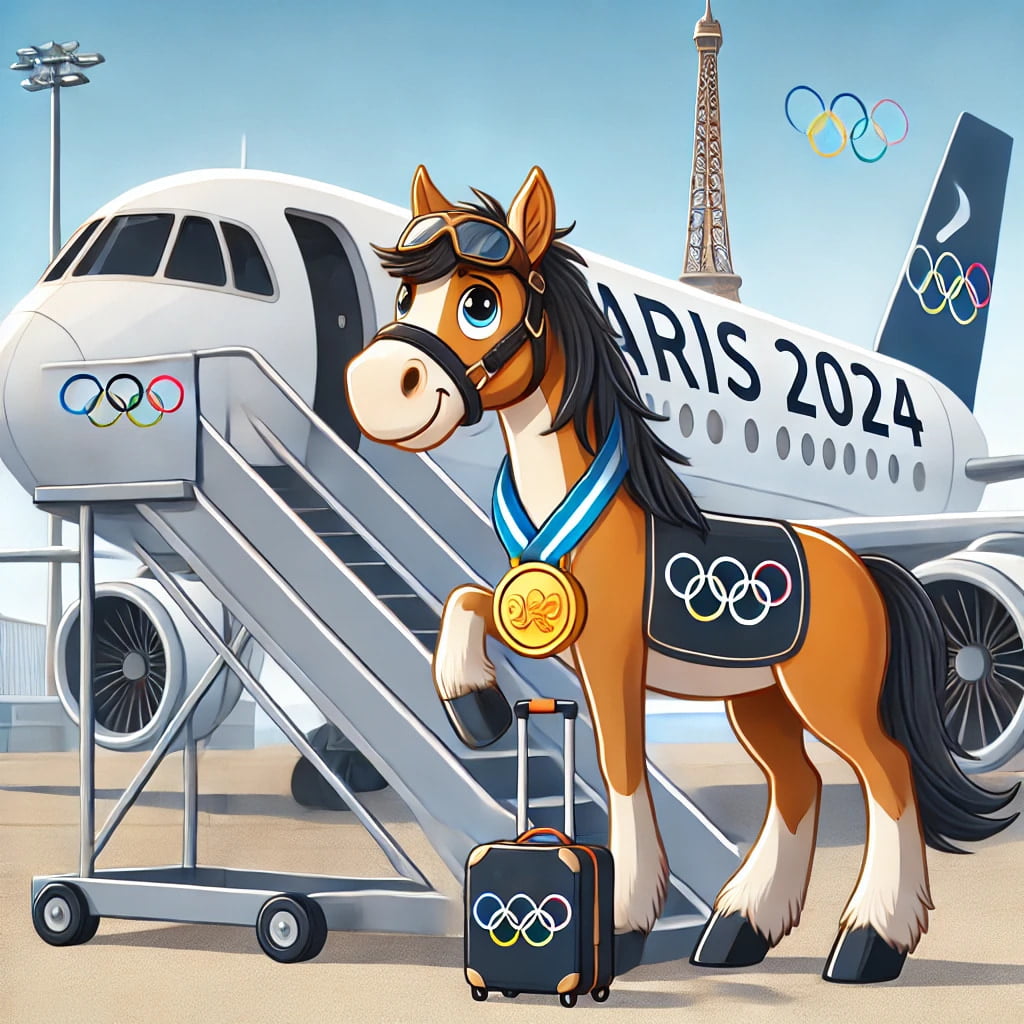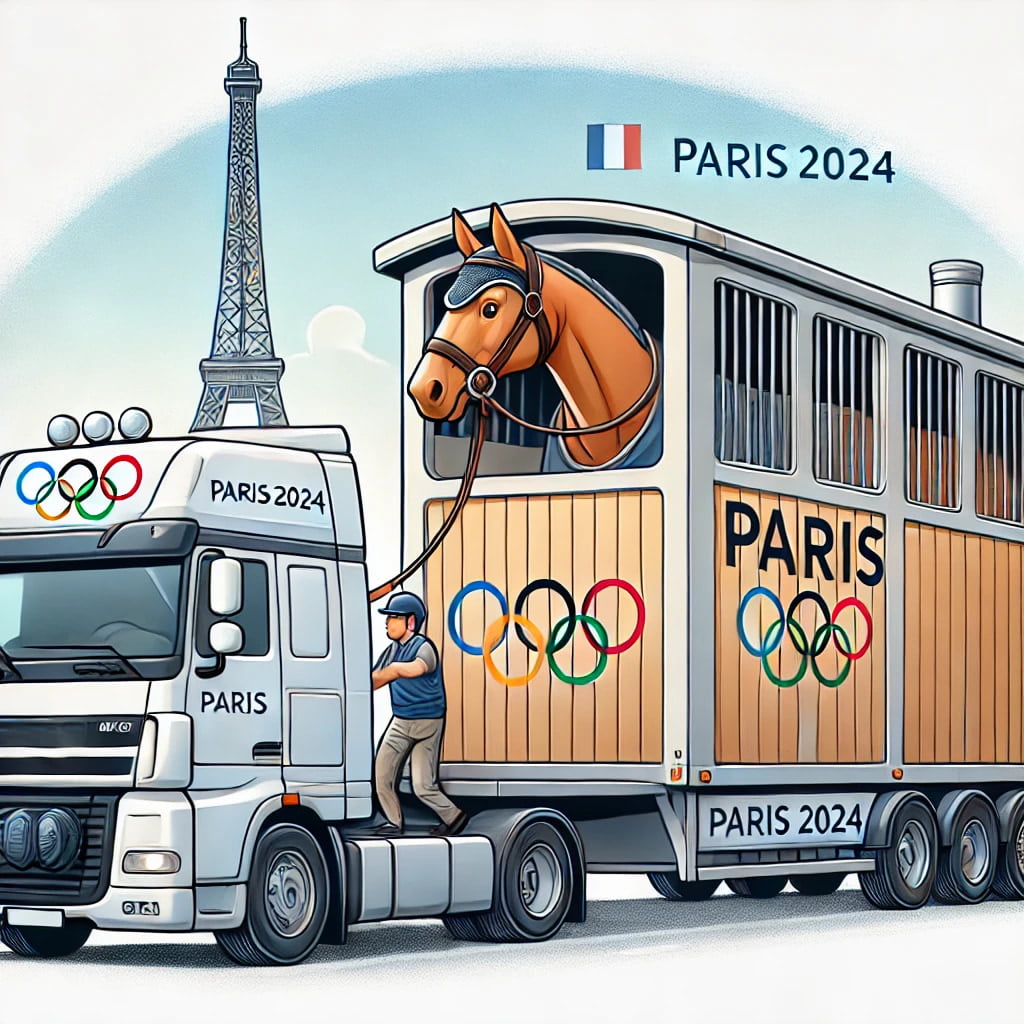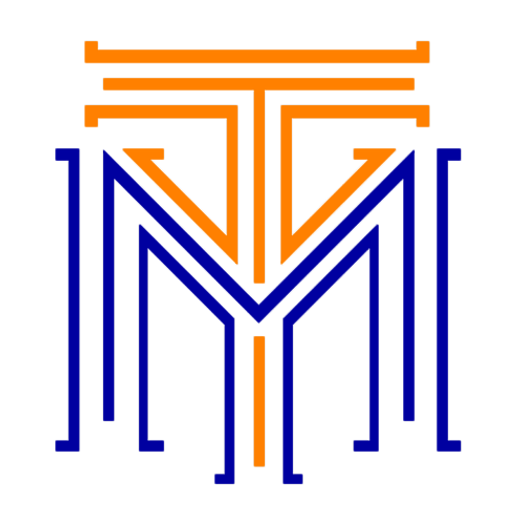
The Olympic Games, the pinnacle of athletic excellence, bring together the best athletes from around the world, including equine stars in disciplines like dressage, eventing, and show jumping. Transporting these magnificent horses to the Olympic venue is a complex, meticulous process that ensures their safety, comfort, and readiness to compete at the highest level. Here, we explore the fascinating journey of horses from their stables to the Olympic arena.
Pre-Travel Preparations.
Health and Fitness Checks: Before embarking on their journey, horses undergo rigorous health checks to ensure they are fit for travel. Veterinarians conduct thorough examinations, checking for any signs of illness or injury. Vaccinations must be up-to-date, and blood tests are often required to comply with international regulations.
Travel Conditioning: Just like athletes, horses need to be conditioned for travel. They are gradually introduced to their travel environment to reduce stress. This acclimatization process includes spending time in travel stalls and, if they haven’t flown before, familiarizing themselves with the sounds and sensations of an airport.

Documentation and Logistics.
Passports and Paperwork: Horses have passports too! These equine passports contain detailed information about the horse’s identity, health records, and vaccination history. Additionally, numerous permits and documents are required to meet the stringent regulations of international equine transport.
Logistics Coordination: Coordinating the logistics of transporting horses involves a network of professionals, including veterinarians, grooms, transport coordinators, and customs officials. Specialized equine transport companies handle the intricate details, ensuring all regulations are met and the horses’ journey is as smooth as possible.
The Journey.
Ground Transport to the Airport: The journey begins with ground transport from the horse’s stable to the airport. Horses travel in specially designed horse trailers or lorries, which provide a stable and comfortable environment. Experienced drivers and handlers ensure that the ride is smooth and uneventful.
Boarding the Plane: Horses board specialized cargo planes equipped to handle their unique needs. These planes, often dubbed “air stables,” have customized stalls to secure the horses and provide space for them to move comfortably. Loading horses onto the plane is a carefully orchestrated process, often conducted in calm, quiet conditions to minimize stress.
In-Flight Care: During the flight, horses are attended to by professional grooms and veterinarians. These caretakers monitor the horses’ health, providing water and, if necessary, feed. The plane's temperature and ventilation systems are carefully regulated to ensure a comfortable environment.

Arrival and Acclimatization.
Unloading and Quarantine: Upon arrival at their destination, horses are unloaded with the same care as during boarding. Many countries require a quarantine period to prevent the spread of diseases. During quarantine, horses are closely monitored for any signs of illness and allowed time to recover from the journey.
Settling In: After quarantine, horses are transported to their Olympic stables, where they begin the acclimatization process. This includes adjusting to the local climate, getting used to new surroundings, and resuming their training routines. Veterinarians and grooms continue to monitor the horses’ health and well-being, ensuring they are in peak condition for competition.
The Role of Technology: Modern technology plays a crucial role in equine transport. GPS tracking systems monitor the horses’ location and the conditions inside the transport vehicles. Advanced ventilation and air filtration systems maintain optimal air quality, while sophisticated health monitoring devices track vital signs in real-time.
Conclusion.
Transporting horses to the Olympics is a remarkable feat of planning, coordination, and care. It requires a dedicated team of professionals and state-of-the-art technology to ensure these equine athletes arrive healthy, stress-free, and ready to perform. As we watch these magnificent creatures compete, it’s worth appreciating the incredible journey they’ve undertaken to reach the world’s greatest sporting stage.


